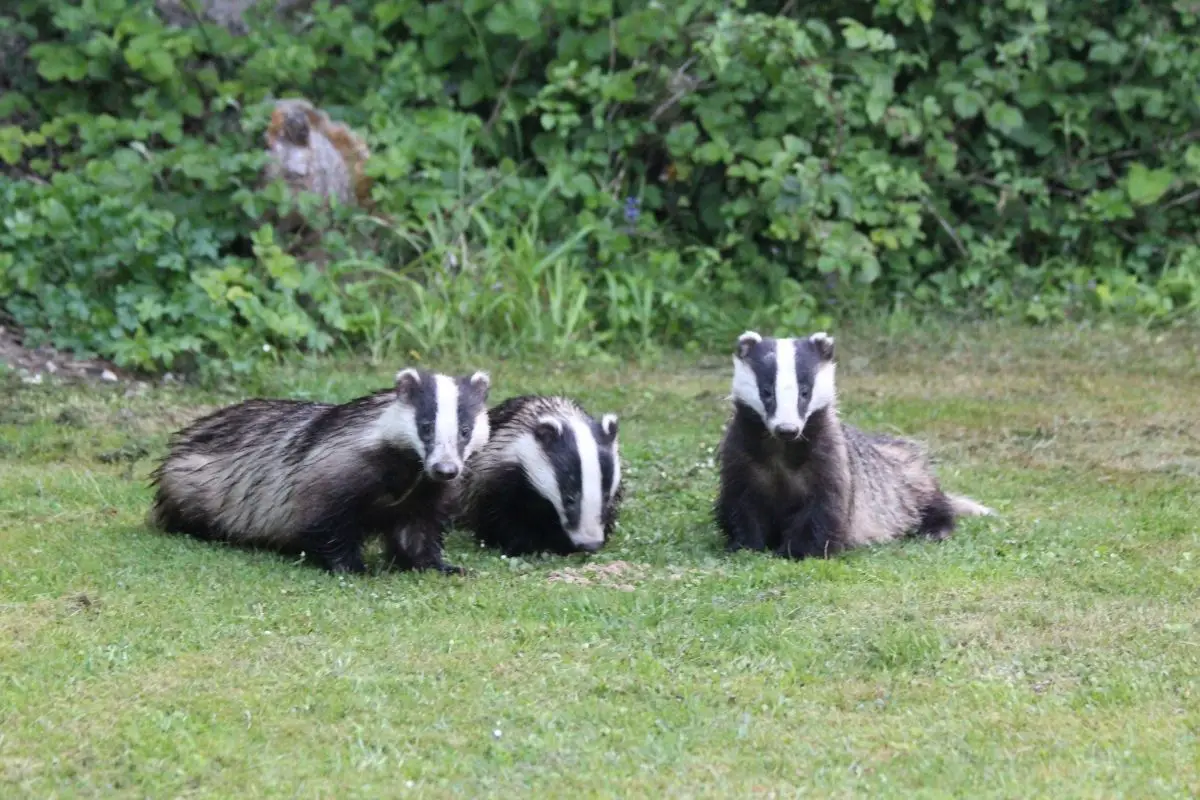
Badgers live all around the world and have a reputation as tough animals that will fight to the death. The Honey Badger, especially, is known to fight much larger animals and often wins those fights. Badgers have their own lore around the world in addition to a reputation for toughness.
In North America, coyotes sometimes eat badgers and vice versa, but the majority of their interactions appear neutral. They often tolerate each other and have been known to work together hunting. The badger can root out rodents, and coyotes catch them when they try to escape.
Another story that may be more legend than truth, has it that a bird leads the honey badger to where the honey is. The badger attacks and eats his fill, and the bird gets what is left.
Family Mustelidae
Subfamily Melinae:
Hog badger, Arctonyx collaris
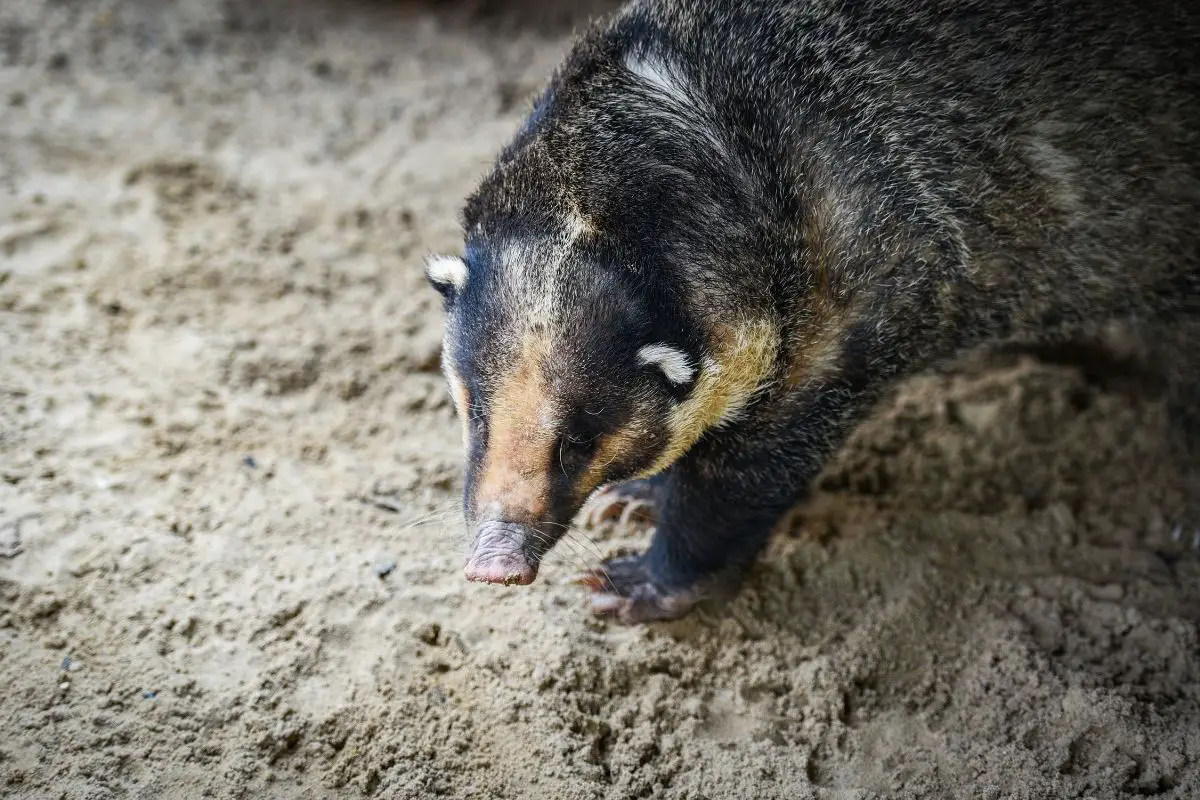
Hog badgers live in Southeast Asia, from China to Thailand, as well as parts of the Indian subcontinent. They like grasslands, hills, and mountains, and evergreen and tropical areas. These badgers are adaptable when it comes to food, and eat what is available in their area.
They eat plants, worms, and small animals. Hog badgers have a long snout and large claws that make them adept at digging. They eat fruit and roots, and earthworms appear to be a favorite.
Hog badgers are strong predators, and defenders of themselves when needed, with big claws, strong jaws, and a reputation as having a bad temper. They have a snout like a hog and can sniff out food underground. They can dig very fast, whether looking for food or digging out a place to hide.
Badgers are nocturnal, sleeping during the day in the burrows they have dug. They tend to be solitary animals but travel in small groups at times. Badgers have lived 12 years in captivity, and it is believed that is how long they live in the wild as well.
Hog badgers can dig tunnels where they live, and they can be extensive. In some cultures, badgers are hunted for food and for sport. In Thailand and India, they are now listed as threatened species due to over-hunting and loss of habitat.
They are also threatened by overhunting by hunting dogs in China. Hog badgers are the second-largest badger, and are three feet long and may weigh 20 pounds. Most hog badgers fall into the “greater hog badger” category, but there are also Indochinese and Burmese hog badgers.
Burmese ferret badger

The Burmese Ferret Badger lives in Nepal, northern India, and Myanmar, and some have been reported in China, Vietnam, and other parts of southeast Asia. They like to live in forests and sometimes live in grasslands. They are like many types of ferrets, relatively small at six to eight pounds as an adult.
They may be two feet long with a bushy brown tail. All ferret-type badgers have partially webbed toes and ridges on the bottom of their feet. This makes them capable of climbing, but they spend most of their time either on the ground or underground.
They have a white head with a black band across the face and forehead. They have a white stripe from head to tail. Burmese ferret badgers live 10 years in captivity, and there is no data on how long they live in the wild.
They sleep most of the day in burrows. They are different in that they do not often dig their own burrow, but take over one that has been abandoned. They are solitary animals except during the breeding season once each year.
This badger eats worms, roaches, grasshoppers, and small animals like frogs and lizards. They are active at night and are searching for food most of that time. People keep badgers on their property in India to control roaches and other pests.
They are also used as food and for medicinal purposes. They are not listed as endangered, but a loss of habitat is a concern to conservationists.
Oriental ferret badger, Melogale orientalis
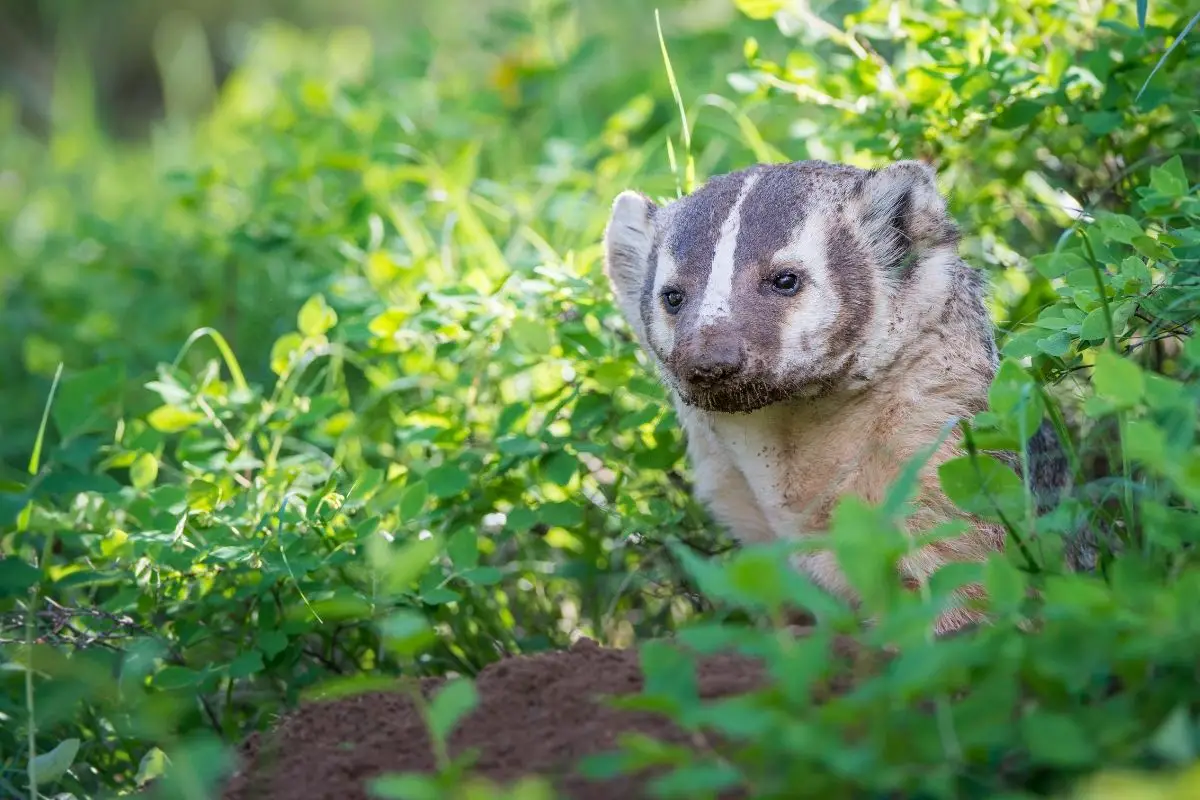
The Oriental Ferret Badger is also called the Javan Badger. It lives only on the islands of Java and Bali. They have been seen only in the mountainous areas of those two islands.
A lot is unknown about this species, but they have been seen in forests, as well as rubber plantations on those islands. They tend to like areas with thick undergrowth in forests. These are small thin creatures, weighing five pounds or less when fully grown.
They are about a foot-and-a-half long. They have small heads and thick noses. Like other badgers, they have big claws and strong jaws.
They have not been studied a lot. Some consider them the same as the Bornean ferret badger. They eat earthworms, roaches, and grasshoppers, and will eat small animals like frogs or lizards.
They dig through leaf litter and picnic sites at night. They use pre-existing holes for burrows as opposed to making their own. These badgers are nocturnal, and they forage in small groups at night.
They are traded in the pet market on these islands, but it is illegal.
Chinese ferret badger
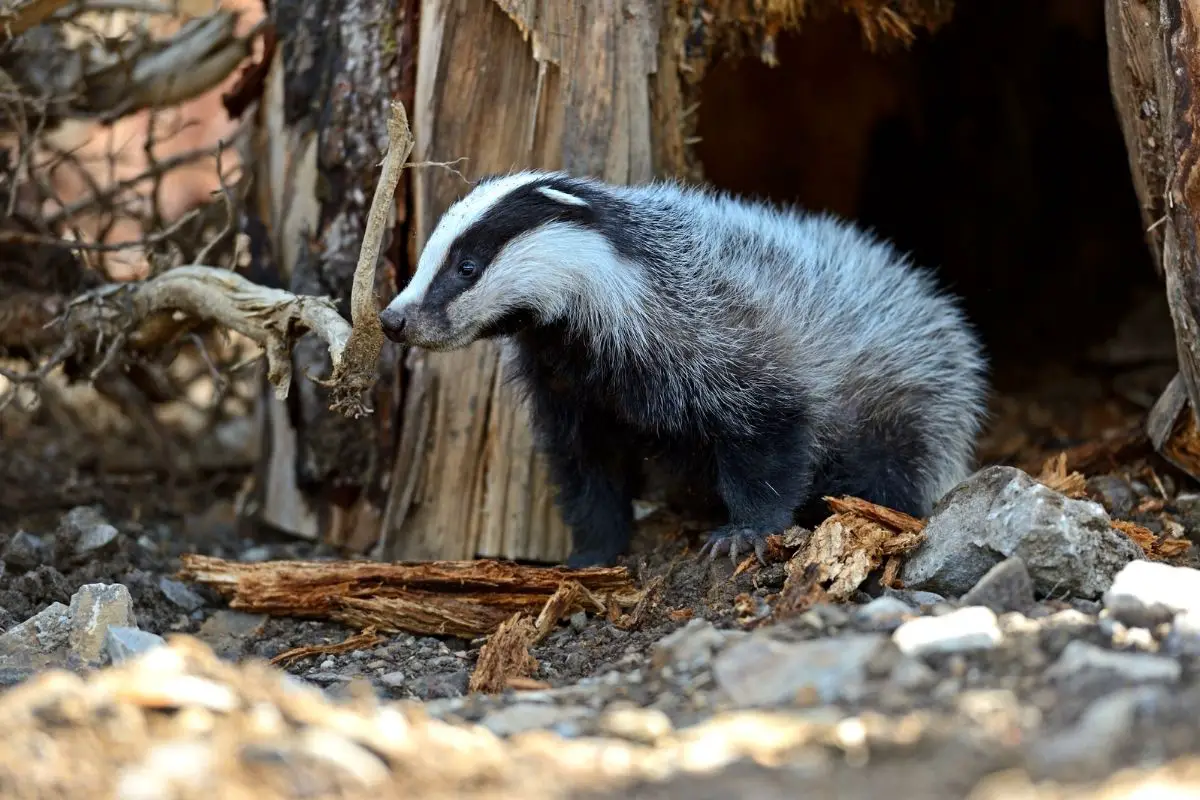
The Chinese Ferret Badger is very similar to the Oriental Badger. The Chinese badger lives mostly in China in tropical and sub-tropical areas. They are the smallest of the badger family, weighing in at just over six pounds, and are 16 inches long, not counting their tail.
They have dark brown fur, and their underside is white to orange. The face is black with a white mask. Their fur is short and there is a stripe down the middle of the back.
Like other badgers, they have large claws on their front feet that make them good diggers. They are widely hunted for their fur. They are very slender animals and are almost inedible, but some still try to eat them.
Even though they are hunted a lot in south China, they are not considered threatened. One reason is they are prolific breeders, with the female having two litters of two to four cubs each year. These badgers live more than 10 years and have been known to live 15 years in captivity.
Like other badgers, they are active at night. They like to eat worms, roaches, grasshoppers, frogs, and similar types of organisms. They live in holes and sometimes they dig them themselves.
Some people in China like having them around because they at insects and roaches.
Everett’s ferret badger
Everett’s Ferret Badger has a small area, with all of them living on Mt. Kinabalu on the north side of Borneo in Malaysia. It has not been widely studied, but it is part of the Melogale family. They live at elevations between 1000 and 3000 meters on the mountain.
They live on wooded hillsides in a sub-tropical environment. This is one of the smaller badgers, at five or six pounds full grown, and 16 inches long. Like other badgers, they have short legs with big strong digging claws.
They have a white mask on their faces that sets them apart. They have a stripe on their backs that can vary from white to red. They are able to reproduce throughout the year.
They are known to live 10 years in captivity, but there is no data on how long they live in the wild. They are welcomed by people of the area and are kept around to kill roaches and other pests. They do not dig their own burrows but take over ones other animals have used.
Everett’s Badger is nocturnal and spends most of the night foraging for food, such as amphibians, reptiles, eggs, worms, and roots. They are also adept climbers and have foraged in trees. Even though there are few of these because of their limited area, they have more than one name.
They are also known as Bornean Badgers and Kinabalu badgers.
Eurasian badger
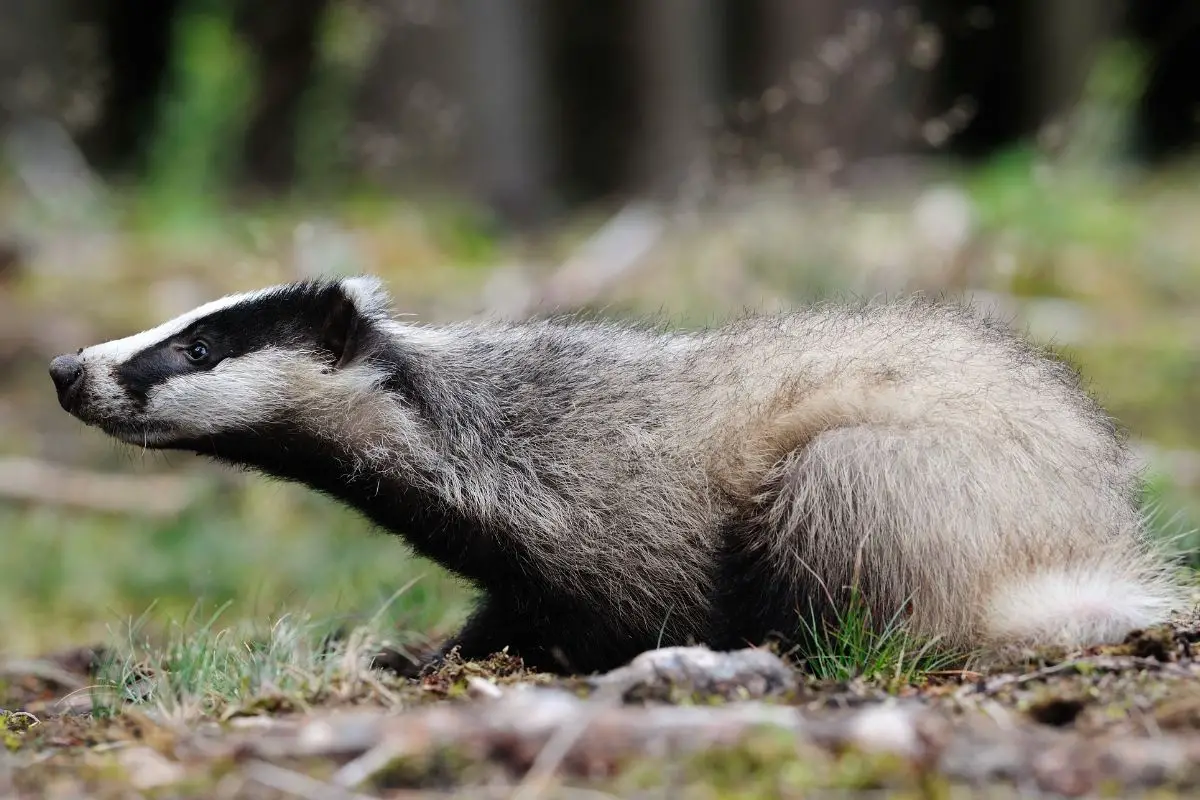
The Eurasian Badger is also called the European Badger and is found throughout Europe. They are found from Ireland all the way to Japan. They are very adaptable and live in a wide range of places.
They like forests best but are also known to inhabit grasslands, farmland, and semi-deserts. They like to find rock overhangs to use as shelters and can dig their own burrows. These badgers are on the larger side, with adult males weighing 33-35 pounds and females a little less than that.
Their short, stocky bodies can grow up to almost three-feet long. Eurasian badgers have dark stripes that run from their nose to their shoulders, and there are stripes that go all the way down their body. Because of their great range, perhaps, they can be divided into 24 sub-species that differ by color and tone.
They live in social groups with only the dominant male mating. They will defend each other against predators. In some cases, only the dominant female breeds as well.
Some Eurasian Badgers have lived as long as 14 years, but most do not live beyond six years. In captivity, they have lived for 19 years. As many as half of the cubs born die before their first year is completed.
They are social animals, living in groups. They create communal burrow systems and there may be as many as 15 in a group. Like other badgers, they are nocturnal and spend most of their time foraging for food.
They like earthworms. They will also eat rabbits, voles, moles, mice, rats, and hedgehogs. They also eat wasps and will attack their nests.
Subfamily Mellivorinae:
Ratel or honey badger
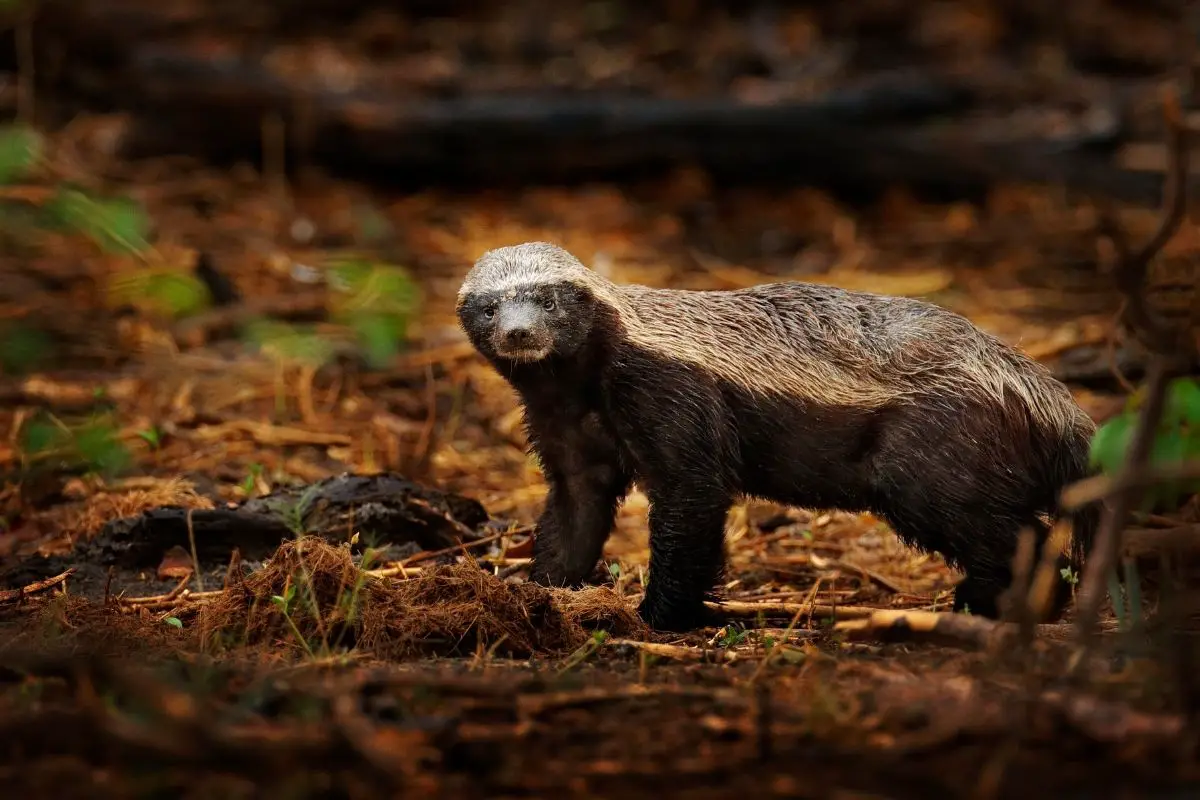
Honey Badgers have been called the most fearless animals in the world. They will take on much larger animals, and will often win the fight. This is especially the case when they are together as a group.
They have been known to fight off lions. Honey badgers are spread out over North Africa, Southwest Asia, and the Indian subcontinent. They like tropical and subtropical environments, as well as forests, and to some extent deserts.
They avoid the Sahara desert and coastal areas of the Mediterranean. They like burros or rock crevices to have as a shelter. Honey badgers can get to 25 or more pounds and can be two feet long as adults.
They are one of the larger badgers. They tend to be a little larger in Africa. They have a stocky body, a large skull, small eyes, and a muscular neck and shoulders.
The lower half of the body is black, and the upper half is grey to white. Like all badgers, they have large claws on their front feet and very strong jaws. Honey badgers live seven or eight years in the wild and have lived as long as 25 years in captivity.
They are solitary and nomadic. They cover a large area with their foraging. The male usually forages a much larger area than the female.
They are aggressive toward other animals and humans. Males will also fight over a den. Honey Badgers eat a lot of different things, depending on the season and what is available.
They like eggs, small rodents, snakes, birds, and frogs. They also eat fruit and roots. They also like honey and will rob a bee’s nest to get it.
Honey badgers are nocturnal and sleep most of the day. They forage at night with most of their time spent looking for food.
Subfamily Taxideinae:
American badger
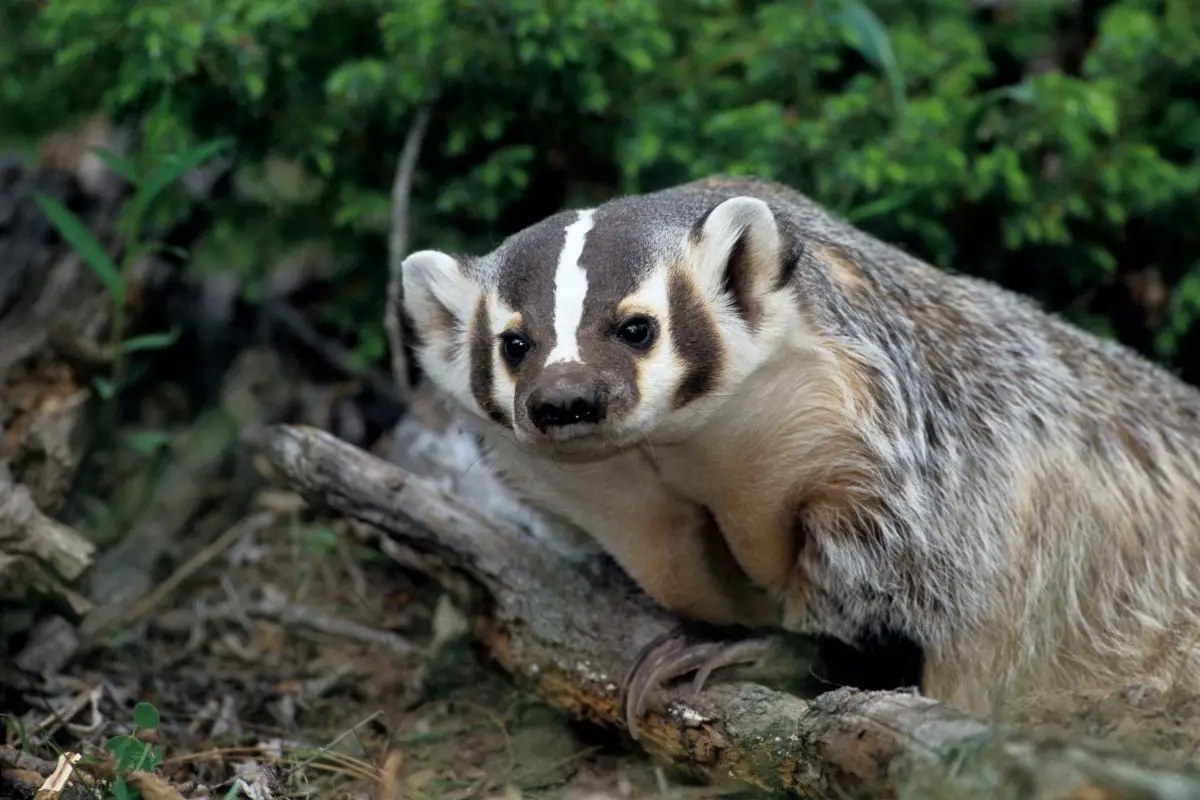
The American badger is similar to the Eurasian badger, but they are not closely related. This badger lives in the northern plains of the United States, central and western Canada, and to some extent in the mountains of Mexico. Their range has expanded in an easterly direction in recent years.
Badgers like dry open grasslands and pastures. They can get rather big, as much as 34 inches long and 15 inches wide, and can weigh up to 25 pounds. Their bodies are flat, and their legs are short and stocky.
Their fur is gray to red. The throat and chin are white, and the face has black patches. Female badgers will build a grass-lined den for their young that are born blind.
They tend to be solitary animals and the males are not involved with the young. American badgers can live up to 26 years in captivity, and an average of 10 years in the wild. Like other badgers, they are nocturnal, sleeping most of the day and foraging for food at night.
Badgers may stay in their dens in winter but they do not hibernate. American badgers dig their own burrows and may have a tunnel system with an enlarged area for sleeping. American badgers like to eat pocket gophers, ground squirrels, prairie dogs, rats, and mice.
They will prey on nesting birds, and eat lizards, fish, and animals they find hibernating. American badgers have been seen hunting with coyotes and the two seem to cooperate. Badgers attack the rodent’s home, and the rodents are caught by coyotes when they try to flee the badger.
Badgers and coyotes tolerate each other and have been seen engaging in playful activities.
Extinct species
- Chamitataxus avitus
- Pliotaxidea nevadensis
- Pliotaxidea garberi
Family Mephitidae
Indonesian or Javan stink badger
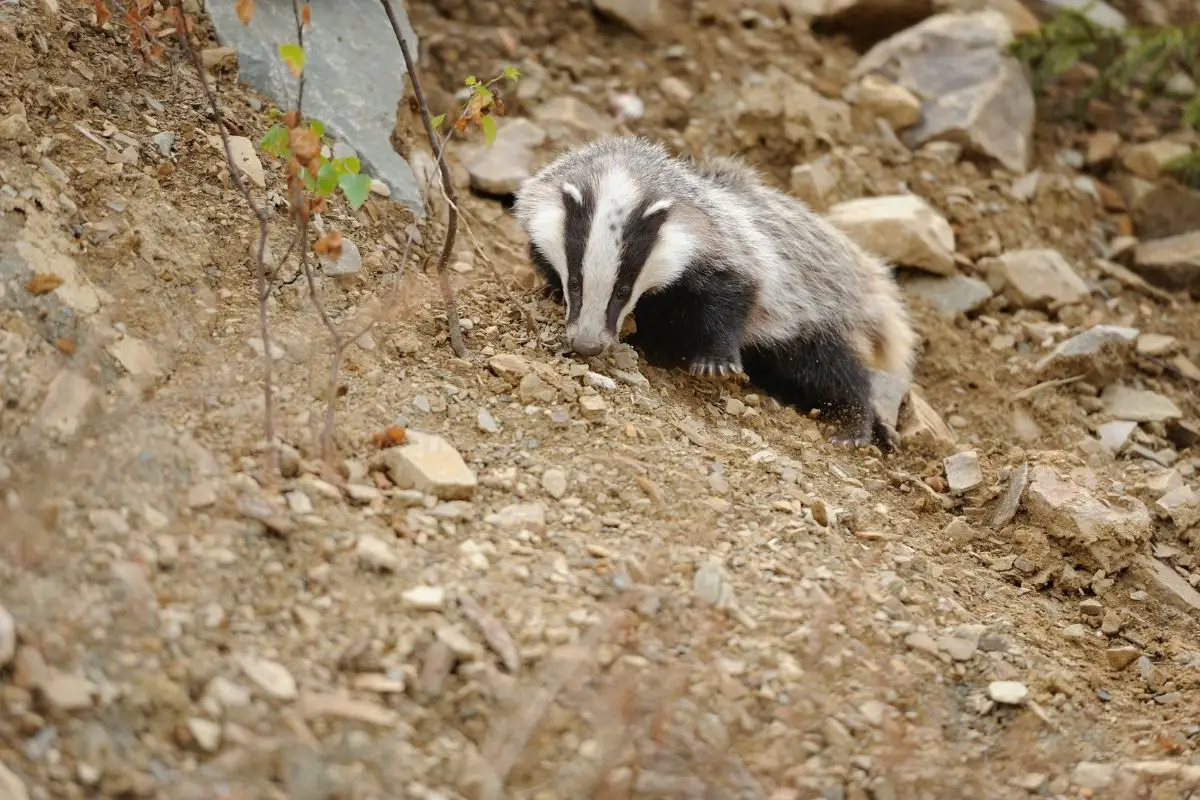
The Indonesian, or Javan stink badger, lives only on the islands of Sumatra, Java, Borneo, and the northern Natuna islands. They often live in the mountains above 7000 feet and live in caves at the higher elevations. This badger is related to the skunk family and can send a stream of smelly liquid on a predator with accuracy.
Their stench has been known to make humans faint and has killed dogs. These badgers have a black to brown coat, and a white patch on top of their heads. They are small, squat, and heavy.
They cannot move fast. They have big claws on their front feet and a snout like a pig. The Javan stink badger gets up to about eight pounds and can be up to 20 inches long.
They dig their own burrow, usually a long tunnel that ends in a larger chamber where they sleep. The burrows are often dug near trees. They sometimes share burrows with porcupines.
They tend to live in pairs and do not roam extensively. They eat worms, insects, grubs, bird eggs, and plants.
Palawan stink badger
The Palawan stink badger is much like the Javan stink badger but has an even smaller area where it lives. This species is only on two Philippine islands. They like to live in cultivated areas and grasslands.
They look a lot like the Javan badger and are about the same size. One key difference is the Palawan stink badger is diurnal and they live a solitary lifestyle. This badger has a high sense of smell and hearing. It is believed they do not see well, and they cannot run fast or very far.
They eat worms and insects, and various kinds of plants. They are seen out during the morning and evening hours.
